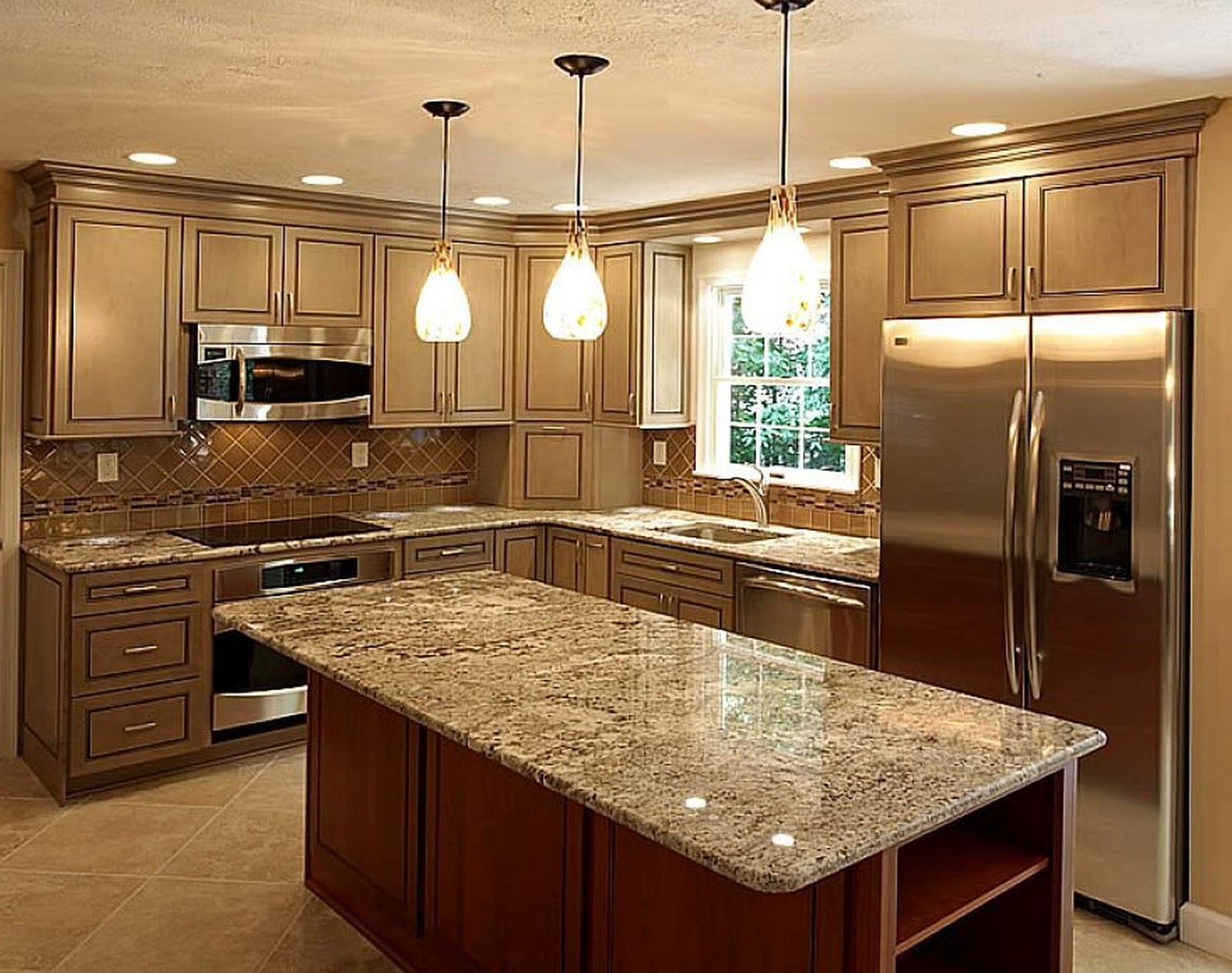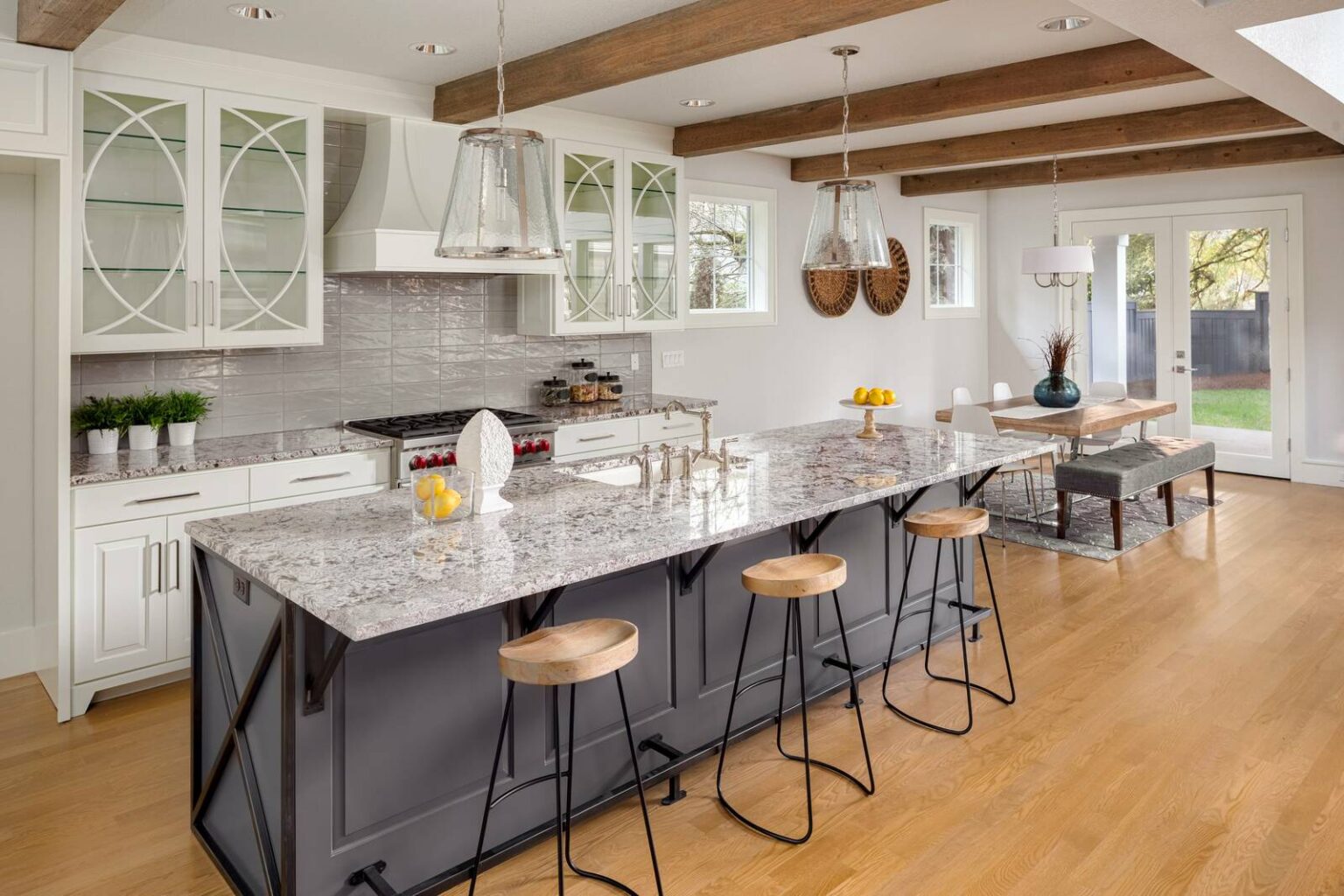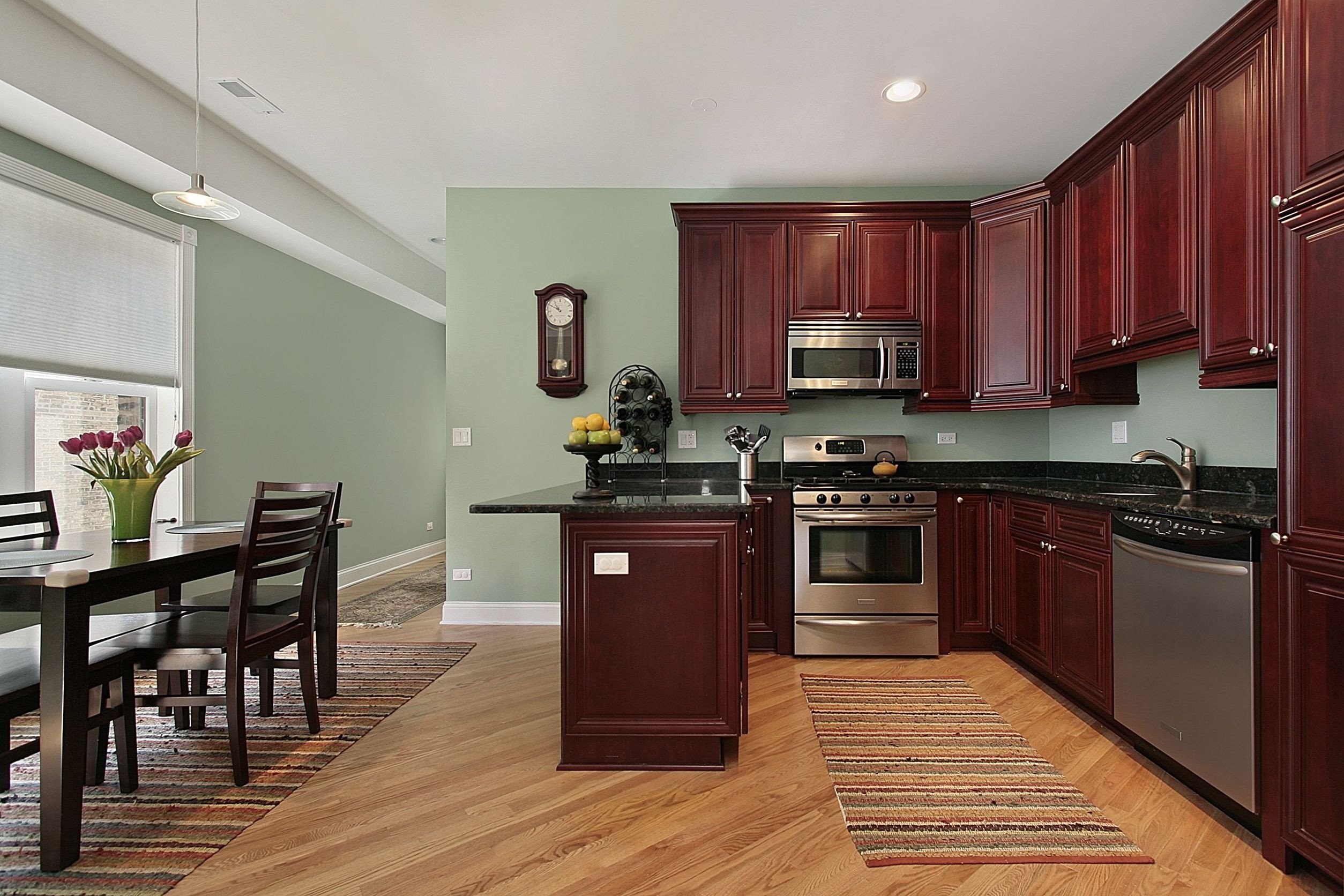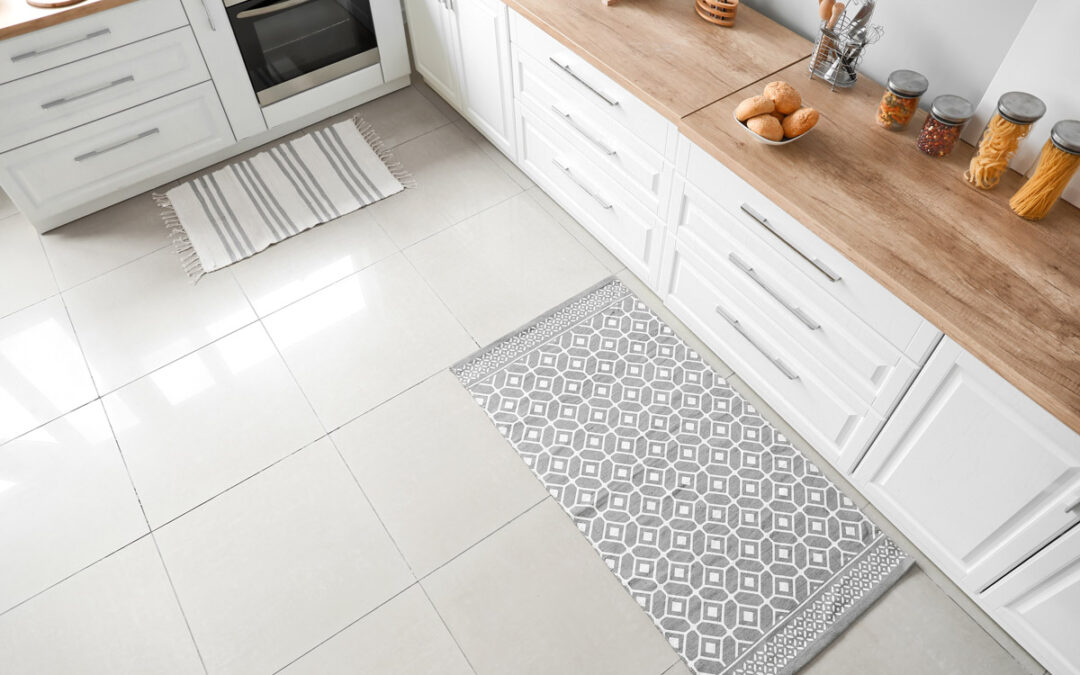Your kitchen is often the heart of your home, and it's important to make sure it reflects your personal style and taste. One of the key elements in creating a beautiful and cohesive kitchen design is color coordination. By choosing the right colors for your countertops, cabinets, flooring, and walls, you can create a space that is both functional and visually appealing. Here are some tips to help you choose the perfect color scheme for your kitchen.1. Color Coordination Tips for Your Kitchen
The countertops in your kitchen are not only important for food preparation, but they also play a significant role in the overall look and feel of the space. When choosing a countertop color, consider the other elements in your kitchen, such as your cabinets and flooring. If you have a bold and colorful backsplash, opt for a neutral countertop to balance out the design. Alternatively, if your cabinets and flooring are neutral, you can add a pop of color with a vibrant countertop.2. How to Choose the Perfect Kitchen Countertop
Cabinets are a major focal point in any kitchen, so it's crucial to choose the right color. If you want your cabinets to stand out, consider a bold color like navy blue or forest green. For a more traditional and timeless look, opt for neutral shades like white, cream, or gray. You can also choose complementary colors for your cabinets and countertops to create a cohesive and balanced design.3. Cabinet Colors That Complement Your Kitchen
When it comes to flooring, there are various options to choose from, such as hardwood, tile, or vinyl. The key is to select a flooring color that complements your cabinets and countertops. For instance, if you have dark cabinets and countertops, consider a light-colored flooring to create contrast. If you have a more neutral color scheme, you can opt for a bold and patterned floor to add visual interest to the space.4. Flooring Options for a Coordinated Kitchen Design
The walls in your kitchen are another opportunity to add color and personality to the space. When choosing a wall color, consider the overall theme and style of your kitchen. If you have a modern and sleek kitchen, opt for a neutral color like white or gray. For a more rustic or farmhouse-style kitchen, consider warmer colors like beige or light brown. And if you want to add a pop of color, choose a bold hue for an accent wall.5. Wall Color Ideas for a Beautiful Kitchen
One of the most important aspects of color coordination in the kitchen is ensuring that your countertops and cabinets work well together. As mentioned before, you can choose complementary colors, but it's also essential to consider the materials and finishes. For instance, if you have wooden cabinets, consider a stone or quartz countertop for a beautiful contrast. If you have white cabinets, a marble or granite countertop can add elegance and sophistication to the space.6. Coordinating Countertops and Cabinets: A Guide
The type of flooring you choose for your kitchen can make a significant impact on the overall look and feel of the space. In addition to color, consider the durability and maintenance of the flooring material. For a high-traffic kitchen, opt for a durable and easy-to-clean option like tile or vinyl. And if you want a more luxurious feel, hardwood flooring can add warmth and character to your kitchen design.7. Choosing the Right Flooring for Your Kitchen
Matching colors between your cabinets and walls can be a bit tricky, but there are some tips you can follow to make it easier. First, consider the undertones of both colors. If your cabinets have warm undertones, choose a wall color with a similar warmth. You can also opt for a monochromatic color scheme, where you use different shades of the same color for your cabinets and walls. This creates a cohesive and harmonious look.8. Tips for Matching Kitchen Cabinet and Wall Colors
When it comes to color coordination in your kitchen, it's essential to have a cohesive look and feel. This means that all the elements, including countertops, cabinets, flooring, and walls, should work together seamlessly. One way to achieve this is by choosing a dominant color and then using complementary or contrasting colors as accents. This creates a balanced and visually appealing design.9. How to Coordinate Kitchen Colors for a Cohesive Look
In the end, color coordination in kitchen design is crucial because it creates a space that is not only functional but also visually appealing. A well-coordinated kitchen can make a significant impact on the overall atmosphere of your home. By following these tips and considering your personal style and taste, you can create a beautiful and coordinated kitchen that you will love spending time in.10. The Importance of Color Coordination in Kitchen Design
Creating a Cohesive and Stylish Kitchen Design

Finding the Perfect Color Scheme
 When it comes to designing your kitchen, one of the most important decisions you'll make is choosing the right color scheme. The colors you choose for your
kitchen countertops, cabinets, floors, and walls
will set the tone for the entire space. A cohesive color scheme will not only make your kitchen look stylish, but it can also make the space feel more spacious and inviting. So, how do you choose the perfect color scheme for your kitchen?
When it comes to designing your kitchen, one of the most important decisions you'll make is choosing the right color scheme. The colors you choose for your
kitchen countertops, cabinets, floors, and walls
will set the tone for the entire space. A cohesive color scheme will not only make your kitchen look stylish, but it can also make the space feel more spacious and inviting. So, how do you choose the perfect color scheme for your kitchen?
Consider Your Personal Style
 Before you start picking out colors for your kitchen, take some time to think about your personal style. Do you prefer a more traditional or modern look? Are you drawn to bold and vibrant colors or do you prefer a more neutral palette? Your personal style will play a big role in determining the color scheme that will work best for your kitchen.
Before you start picking out colors for your kitchen, take some time to think about your personal style. Do you prefer a more traditional or modern look? Are you drawn to bold and vibrant colors or do you prefer a more neutral palette? Your personal style will play a big role in determining the color scheme that will work best for your kitchen.
Think About the Size of Your Kitchen
 The size of your kitchen also plays a role in determining the right color scheme. If you have a small kitchen, using light colors for your cabinets and walls can help make the space feel larger and more open. In a larger kitchen, you have a bit more flexibility to experiment with different colors, but it's still important to choose colors that complement each other.
The size of your kitchen also plays a role in determining the right color scheme. If you have a small kitchen, using light colors for your cabinets and walls can help make the space feel larger and more open. In a larger kitchen, you have a bit more flexibility to experiment with different colors, but it's still important to choose colors that complement each other.
Coordinate Your Countertops and Cabinets
 When it comes to
choosing kitchen countertops and cabinets
, it's important to make sure they coordinate well with each other. If you have a busy pattern on your countertops, opt for a more simple and neutral cabinet color. On the other hand, if you have bold and colorful cabinets, choose a more subdued countertop to balance out the space.
When it comes to
choosing kitchen countertops and cabinets
, it's important to make sure they coordinate well with each other. If you have a busy pattern on your countertops, opt for a more simple and neutral cabinet color. On the other hand, if you have bold and colorful cabinets, choose a more subdued countertop to balance out the space.
Add Contrast with Your Floors and Walls
 While your countertops and cabinets should coordinate, your
kitchen floors and walls
can add some contrast to the space. If you have lighter countertops and cabinets, consider using a darker color for your floors to create a visual contrast. Or, if your countertops and cabinets are on the darker side, use a lighter color on your walls to add some balance and brightness to the kitchen.
While your countertops and cabinets should coordinate, your
kitchen floors and walls
can add some contrast to the space. If you have lighter countertops and cabinets, consider using a darker color for your floors to create a visual contrast. Or, if your countertops and cabinets are on the darker side, use a lighter color on your walls to add some balance and brightness to the kitchen.
Don't Forget About Lighting
 Lighting can also play a big role in how your chosen colors look in your kitchen. Natural light can enhance the colors and make them appear more vibrant, while artificial lighting can sometimes dull them down. Consider adding different types of lighting in your kitchen, such as undercabinet lighting or pendant lights, to create the perfect ambiance for your color scheme.
In conclusion, choosing a color scheme for your kitchen involves a combination of personal style, size of the space, and coordination between different elements. By considering all of these factors and experimenting with different color combinations, you can create a
cohesive and stylish kitchen design
that you'll love spending time in.
Lighting can also play a big role in how your chosen colors look in your kitchen. Natural light can enhance the colors and make them appear more vibrant, while artificial lighting can sometimes dull them down. Consider adding different types of lighting in your kitchen, such as undercabinet lighting or pendant lights, to create the perfect ambiance for your color scheme.
In conclusion, choosing a color scheme for your kitchen involves a combination of personal style, size of the space, and coordination between different elements. By considering all of these factors and experimenting with different color combinations, you can create a
cohesive and stylish kitchen design
that you'll love spending time in.

























/blackmarblekitchen-bc1dc1df700145d696713341122fe3a4.jpeg)











:max_bytes(150000):strip_icc()/kitchen-with-cork-floors-528388274-5849d3765f9b58a8cdd12f67-5c0d507f46e0fb000120ac31.jpg)


/GettyImages-625163534-5c4f1804c9e77c00014afbb5.jpg)










































































